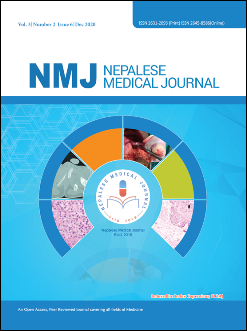Doctor-Patient Communication for Adherence to Hypertension Treatment in Nepal
DOI:
https://doi.org/10.3126/nmj.v3i2.32946Keywords:
doctor patient communicationAbstract
Effective doctor-patient communication is key to addressing the signifi cant issue of nonadherence to hypertension treatment in Nepal. Common clinical messages about hypertension are evaluated utilizing the framework of the Common-Sense Model of Self-Regulation for their role in shaping the patient models that underlie nonadherent behavior. Clinical communications and practices are recommended: to respectfully elicit and address patient reliance on self-identifi ed symptoms; to accompany warnings of hypertension’s serious consequences with specifi c individual action-plans for durable effects; to emphasize the necessity of long-term continuous treatment without creating fears of dependence and withdrawal effects or burdensome monitoring and counseling; to inform of side-effects while presenting medication as nontoxic and necessary for the body’s maintenance of a healthy balance. By acknowledging the patient as an active agent engaged in self-regulation and by employing culturally consonant concepts (often Ayurvedic), we can encourage accurate patient
illness and treatment representations that guide medication adherence.
Downloads
Downloads
Published
How to Cite
Issue
Section
License
This license enables reusers to distribute, remix, adapt, and build upon the material in any medium or format, so long as attribution is given to the creator. The license allows for commercial use.
Copyright on any article published by Nepalese Medical Journal is retained by the author(s).
Authors grant Nepalese Medical Journal a license to publish the article and identify itself as the original publisher.
Authors also grant any third party the right to use the article freely as long as its integrity is maintained and its original authors, citation details and publisher are identified.




